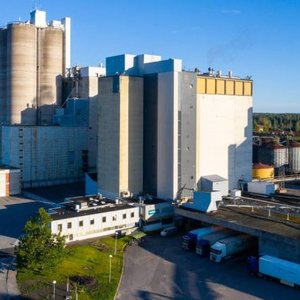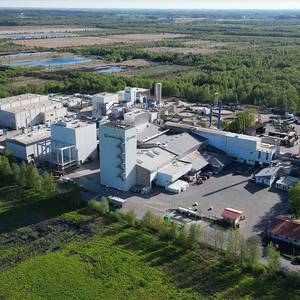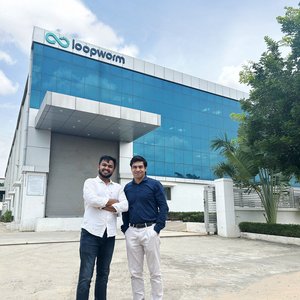During the February AQUACULTURE 2013 conference in Nashville, Tennessee there was a 4-hour special session on “Advances and Outlook for Organic Aquaculture from Policies to Market.” Panel participants included officials from the USDA such as Max Holtzman, Senior Adviser to the Secretary of Agriculture, Mark Bradley of the USDA National Organic Program, and Robert “Mac” Stone, chair of the National Organic Standards Board. George Lockwood was the principal organizer of this session with some help from Gary Jensen of the USDA National Institute of Food and Agriculture. George S. Lockwood provided these highlights from the meeting:
In addition, the USDA- appointed Aquaculture Working Group (AWG) was well represented by Sebastian Bell, Ron Hardy, Albert Tacon, Rob Mayo, John Hargreaves, Kwamena Quagrainie, and George Lockwood, its chair. The AWG is twelve people with diverse backgrounds, expertise and experience in aquaculture. The AWG was appointed in 2005 to advise the National Organic Standards Board (NOSB) and USDA’s National Organic Program (NOP) on the development of organic aquaculture standards.
Several panels with invited speakers addressed the status of organic rulemaking by the USDA, as well as the need for the workability of the proposed rules previously recommended by the NOSB. There were panels that addressed consumer and retail perceptions of organic aquaculture, and the critical topic of organic feed ingredients.
Comparisons of the NOSB recommendations with recent organic standards by the European Union (EU) and Canadian authorities were presented with a discussion of the impact of these foreign standards on US markets and production. Lastly, there were discussions of how producers can prepare for organic certification and how potential growers consider adoption of the proposed standards.
The US Organic Food Production Act of 1990 established the NOSB to recommend organic standards to NOP, and the NOP in USDA to administer this new program. From 2005 to 2010, AWG advised the NOSB in the development of their 2010 recommendations. The NOP has begun a process of considering these recommendations and is drafting a proposed rule that will be published in the Federal Register with a 60 to 90 day period for public review and comment.
The public rulemaking process will create new organic standards for the production and handling of aquatic animals and plants in the US Code of Federal Regulations. Some participants in this session voiced concern about the long delays experienced since the time of the NOSB recommendations with lack of certainty and consistency with USDA standards in the US seafood market. Another subject was concern with delays by the NOSB in processing petitions for the allowance of ten synthetic substances that are essential for organic aquaculture. Under the Organic Food Production Act of 1990, any synthetic substance (not natural or agricultural) used in organic production must be placed on a “National List” by the NOSB. The AWG has ten petitions for such allowances pending for over a year without any action. The petitioning process usually involves at least one-year or longer for designated committees and the full NOSB to act. AWG petitions include such essential substances for the production of aquatic plants and animals as chlorine, vaccines, vitamins and trace minerals.
Some stages in the public rulemaking process are internal to the federal government with the first public opportunity to review and comment on the proposed organic standards when it is posted in the Federal Register. It was reported that considerable work remains before this public review will occur. USDA has assembled an interagency team that is helping to draft the proposed regulations under the guidance of NOP. More information on the status of the posting of the proposed standards will be available later in the year.
A panel with Carl Salamone, Vice President Seafood with Wegmans, Linda O’Dierno of the National Aquaculture Association, and Dick Martin of Black Pearl Seafood presented information and perspectives on consumer preference and market information. They discussed the benefits of fish consumption, food safety and health concerns, benefits sought by consumers, impact of the USDA Organic label in establishing consumer value and trust, and the rapid growth in organic food sales in US markets. Salamone reported on the highly successful experience of Wegmans over the past two-years in selling EU certified salmon with price premiums reaching 75% above the price for conventional farmed salmon.
The panel provided new information that heretofore had only been speculation regarding retail prices for organic seafood products. In view of the Wegmans experience, there is now solid evidence that premiums can be significant and sustainable.
Wegmans demonstrates that US aquaculture producers are currently free to seek organic certification under third-party private standards, or to other country standards, and legally sell certified organic products in the US. The USDA is not stopping US organic aquaculture operations from competing in the current organic seafood market as long as they do not use or reference the “USDA Organic” label. Wegmans uses the EU label with remarkable success.
A panel on organic feed was led by Ron Hardy, University of Idaho, with Albert Tacon of Aquatic Farms, Rob Mayo of Carolina Classics Catfish, Ernie Papadoyianis, Organic Nutrition Industries, Emilie Slaby of the Scoular Company, and Rick Johnson of Algae Producers. They discussed the proposed NOSB feed recommendations, as well as replacements of fish meal and oil from wild fisheries by-products, insect meal, and algae oil. While fish diets that do not include fish meal are possible with grain meal substitutes, they require synthetic amino acids for the healthy growth of fish. Unfortunately, organic management proscribes such synthetics.
Brad Hicks, Taplow Feeds, and Ram Ramkrishnan, Quality Certification Services compared European Union and Canadian organic standards for aquaculture that have been recently adopted. These standards are considerably simpler than those proposed by NOSB for the US, and are not as restrictive. Mark Bradley of the NOP described how the US has “equivalency agreements” with these jurisdictions that allow their certified products grown and processed under their standards to be labeled as USDA Organic in the US with some exceptions. In the case of feed, the Canadians and EU allow fish meal and oil from trimmings from wild fish caught in sustainably managed fisheries. This is very different from the proposed NOSB rule.
Several important conclusions were drawn from this session on organic aquaculture. Namely, there is considerable frustration within the US organic aquaculture community stemming from the seemingly endless delays with the final rulemaking process and, more recently, with petitions for the allowance of synthetic substances on the National List. Another real challenge is how to best address what could be unworkable fish meal and fish oil regulations as proposed by NOSB. There are also uncertainties about possible conflicts with EU and Canadian organic aquaculture standards and their diluting effects on those standards recommended for the US, along with the precedence for equivalency agreement on most organic certified food products.
A major positive development was the remarkable experience reported with the Wegmans program of selling EU labeled organic salmon in the US. Their substantial price premiums with alternative certification and the EU organic label indicate that domestic producers of farmed fish and shellfish may be able to profitably operate organic aquaculture facilities. The USDA Organic label for farmed seafood may bring new opportunities to some US producers to directly compete with foreign producers.
The next NOSB meeting will be in Portland, OR., April 9-11, 2013, with an Aquaculture Working Group Update by George Lockwood on April 10. Download agenda from link below.







